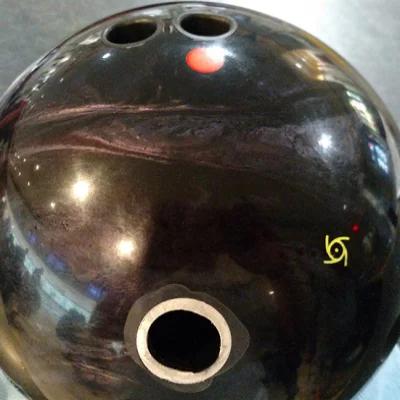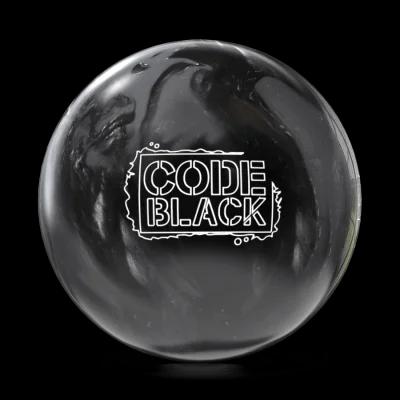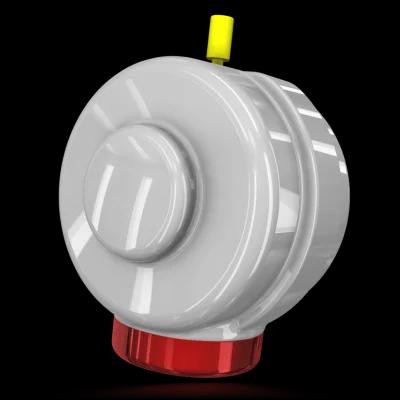Bowling's digital daily newspaper delivering news, analysis and opinion.
Storm Code Black
9 years ago
The CODE BLACK is a ball that allows U.S. bowlers to enjoy a monster that has been available only in international release. Count me as someone who is very happy about that!
Storm’s R2S Pearl is one of the most successful coverstocks of all time, and certainly one of my favorites, though it has been years since it was used in a Premier line ball.
Combining it with the RAD4 core that features differential of 0.056 for 14 and 16 pounds and 0.058 for 15 pounds and you have one wicked ball perfect for when you’re looking for the reaction it delivers, which is so strong that it’s easy to see when it’s not right so you can put it away for something else.
That’s important because there is almost nothing more annoying than having a ball in your hand that gets to the pocket consistently but isn’t quite right to strike. Do you accept all those 9-counts or switch balls seeking carry but perhaps giving up the pocket? An easy decision when the lanes are soft, but a progressively more difficult decision the harder the conditions are.
The CODE BLACK either works or tells you to put it away.
I would say it's the most angular asymmetric ball Storm/Roto Grip has ever made.
I drilled my CODE BLACK very strong with the pin below my ring finger and CG and mass bias kicked to the right, with a weight hole on P2. With my PAP of 4 inches over and 5/8 up, the numbers are 3 1/2 pin to PAP, 4 1/4 mass bias to PAP, and 3 1/4 pin buffer.
Basically, I was following the old axiom of “Drill a strong ball strong and a weak ball weak” although I often violate that one too.
The cover is box shiny and I (as I always do with box shiny balls, hit it by hand with a 4,000-Abralon pad to knock the gloss off before using it. I have taken it down as much as with a used 1,000 pad by hand as I used it in a league session on the 2016 USBC Queens lane pattern, and the South Point Senior Shootout’s 35-, 39- and 43-foot challenging patterns. (Details are in my stories on the tournament.)
The CODE BLACK is incredibly strong in the midlane and “quick” at the breakpoint, meaning it makes a sudden and short transition and turn and then continues on that trajectory into the pocket.
That was as I expected with a core that strong and differential that high.
The CODE BLACK is not a ball to go down and in with — at least for me, with my slower speed and moderate revs. Its strength is when getting the feet in and opening the lane up.
Because it is so quick and strong at the breakpoint it’s hard to throw it through the breakpoint. At the same, it needs some oil to help it get to the breakpoint.
The good news is that when I have good reaction with it, it is not hard to control for a ball so strong and angular.
I also found that once the fronts and play area to the right start to dry up, it was time to put the CODE BLACK away as it would start burning up and hitting flat. (People with higher speed and rev rates might not see this as much.)
But when the CODE BLACK works, it provides the opportunity to open up the lane and create swing area when nothing else in my bag can do so. For that alone, it is worth taking with me to any tournament.
I would say the CODE BLACK is best for medium oil volume — too much oil and you can’t get it to the reaction that is its strength and something like a NO RULES or PHAZE II is better, and too little oil and it’s just too much ball.
I don’t think there’s any style that couldn’t use the CODE BLACK. High-rev and high-speed players can take the cover down and use it to open up the lane so long as there is some dry, and even slow-speed players should be able to get it to the breakpoint shiny and enjoy opening the lane up.



| Coverstock: | R2S Pearl |
| Core: | |
| Box Finish: | 1500-grit polished |
| Lbs | Rg | Diff | Mb |
|---|---|---|---|
| 16 | 2.49 | 0.056 | 0.022 |
| 15 | 2.50 | 0.058 | 0.020 |
| 14 | 2.55 | 0.056 | 0.014 |
| 13 | 2.63 | 0.039 | 0.011 |
| 12 | 2.72 | 0.022 | 0.006 |